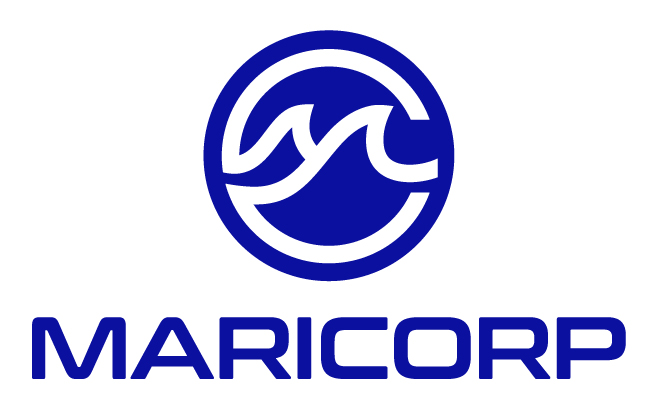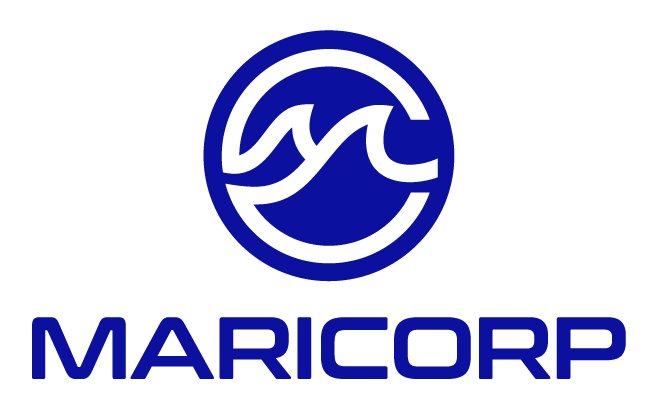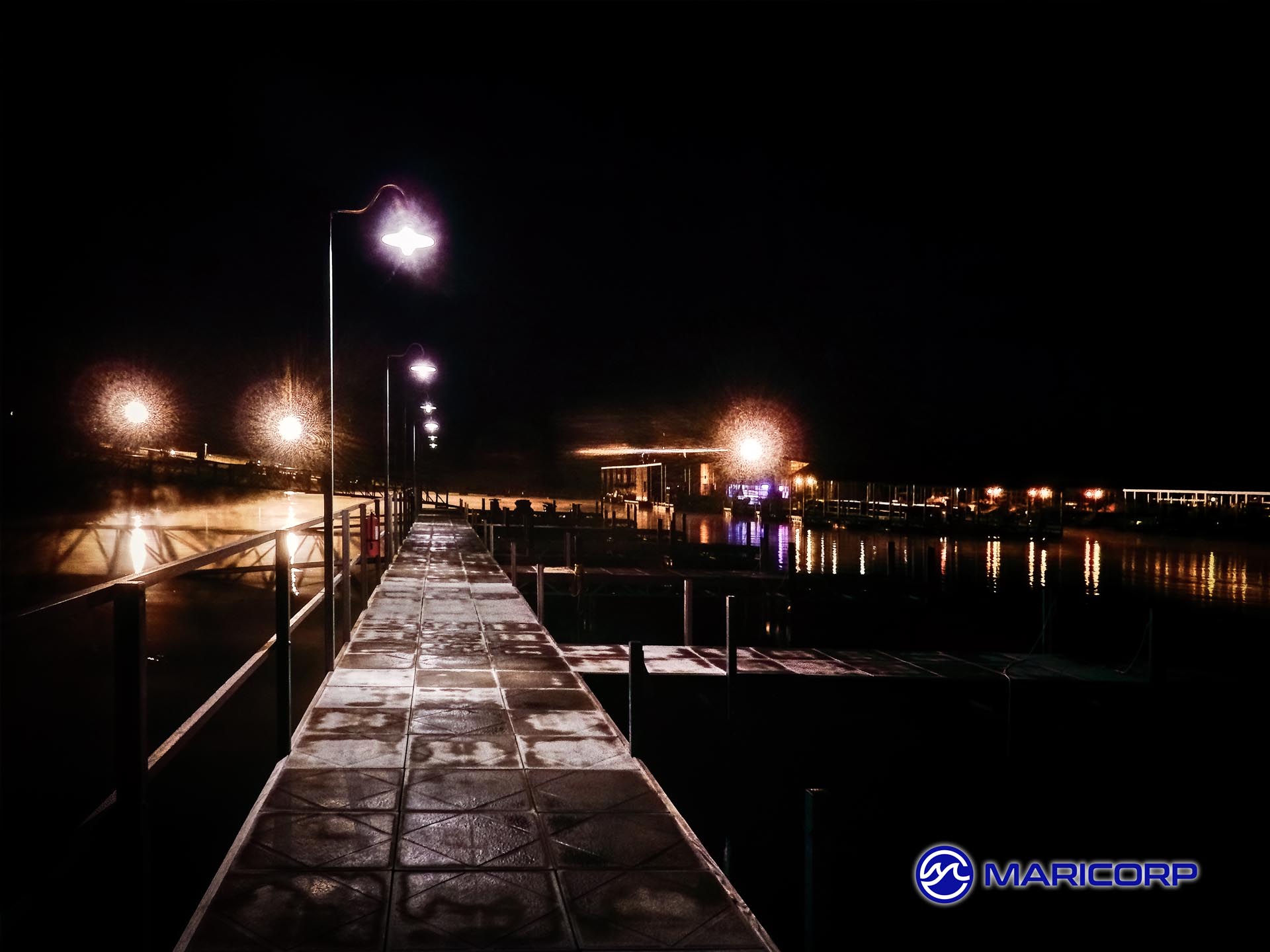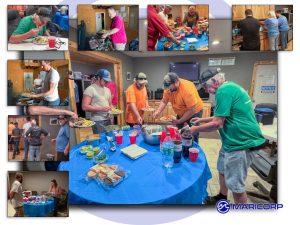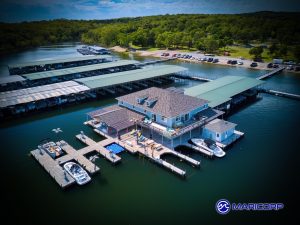Nighttime Dock Safety
After Dark: Strengthening Nighttime Dock Safety at Marinas
When the sun goes down, the risks around a marina change. Navigation becomes harder, visibility drops, and even routine movements—like stepping off a boat or walking along the dock—require more caution. For marina operators and boaters alike, nighttime conditions introduce a new layer of safety challenges that require planning, design, and behavior adjustments.
Marinas that prepare for low-light conditions not only reduce liability, they improve the boater experience and demonstrate a commitment to full-time safety—not just daylight operations. From lighting placement to signage visibility and staff protocol, there are several steps facilities can take to make their docks safer once the sun sets.
What Changes After Dark?
Human vision changes significantly at night—depth perception, peripheral awareness, and color recognition all decline. For example, the National Safety Council notes that depth perception, color recognition, and peripheral vision can be compromised in darkness, increasing visual failure risks. Applied to a marina setting, this means even experienced boaters may misjudge dock edges or trip over lines after hour, especially under poor lighting. On the docks, that means:
- It’s harder to see trip hazards like lines or hoses
- Handrails, cleats, and boat edges may become indistinguishable
- Boaters unfamiliar with the layout may misjudge gangways or slip transitions
- Water and fuel surfaces may reflect lights in confusing ways
Even experienced boaters may struggle with orientation, particularly in unfamiliar marinas or under low moonlight. These conditions make it easier for people to trip, fall, or misstep into the water—especially when carrying gear, pets, or helping passengers.
Common Nighttime Risk Zones
Marina layouts vary, but certain areas consistently become more hazardous at night:
- Fuel docks and pump-out stations
- Gangways and ramps with changing angles
- Dock intersections and T-heads without marked edges
- Transient slips used by unfamiliar or first-time visitors
- Fishing or social gathering areas where people congregate late into the evening
Addressing these locations with lighting, signage, and clear access paths helps reduce confusion and incidents during nighttime hours.
Core Elements of Nighttime Dock Safety
- Install Consistent and Adequate Dock Lighting
Marinas should aim for uniform, low-glare lighting that eliminates dark patches without creating disorienting glare.
- Use LED dock lights with shielded, downward-facing fixtures to preserve visibility and avoid light pollution
- Ensure all gangways, ramps, and finger piers have clear path lighting
- Light up signage, fire safety equipment, and emergency exits
Look for marine-rated LED systems with IP67 or higher waterproof ratings for durability in harsh conditions. Marine-grade fixtures are specifically designed to withstand constant exposure to spray, salt, and moisture, ensuring reliable performance on docks and vessels.
Lighting should be placed at regular intervals to avoid shadows that can obscure rope coils or gear left on the dock. The International Dark-Sky Association also recommends using warmer color temperatures to reduce visual fatigue, deally 2700 K or lower, to improve night vision, reduce glare, and support safer navigation after dusk.
- Highlight Edges, Steps, and Drop-Offs
At night, the visual boundary between dock and water can disappear. Use:
- Reflective tape or paint on the edge of docks and stairs
- Glow-in-the-dark strips or solar-powered edge lights
- Markings around anchor cleats, mooring posts, and transitions
Some marinas use color-coded LED strips to help guide boaters—green for the main walkway, red for end-of-dock indicators, and blue for water access or utilities.
- Ensure All Safety Equipment Is Lit and Accessible
Emergency equipment must be visible and functional after dark:
- Mount small solar lights or photoluminescent markers near fire extinguishers, ladders, and life rings
- Paint safety gear mounts in bright colors for visual contrast
- Check that first-aid kits are reachable and marked on dock maps
Include emergency lighting checks in your regular inspection routine and replace non-working bulbs or corroded fixtures promptly.
- Update Maps and Wayfinding Tools
At night, guests—especially transient boaters—may struggle to find restrooms, exits, or the marina office. Tools that help with navigation include:
- Glow-in-the-dark or backlit marina maps at entry points
- Clearly numbered slips with reflective numbering
- Directional arrows on docks or finger piers
- A QR code-accessible digital map for smartphone users
The Clean Marina Program encourages use of low-impact lighting and smart signage for eco-friendly yet effective wayfinding.
Tips for Boaters Navigating Docks After Dark
Recreational boaters should adjust routines and gear to enhance nighttime safety. Common best practices include:
- Carry a small waterproof flashlight or headlamp when walking the docks
- Keep dock lines, power cords, and hoses neatly coiled and out of foot traffic zones
- Use reflective lines and fenders to make mooring points visible from shore
- Educate guests and children about dock boundaries and visibility issues at night
Boaters should also confirm the location of the nearest life ring, fire extinguisher, or ladder when staying overnight—especially in unfamiliar marinas.
Staff Readiness and Response Protocols
Marina staff should be trained to handle nighttime situations confidently and efficiently.
- Assign specific personnel to conduct dock patrols after dusk during peak season
- Equip staff with LED flashlights, radios, and high-visibility vests
- Maintain a log of lighting outages, near-miss reports, or customer feedback about poor visibility
- Consider using surveillance cameras with night vision to monitor remote or less-trafficked docks
If your facility allows late check-ins or overnight arrivals, prepare a visible drop box or digital check-in instructions that are clearly marked and illuminated.
Encouraging Nighttime Safety Culture
Include nighttime safety in your seasonal communications, orientation packets, and social media posts. Consider reminders like:
“Keep a flashlight in your dock bag—it could help you avoid a misstep.”
“Use reflective lines and watch your step after dusk.”
“Help us keep the dock safe: report any dark areas or broken lights to the office.”
A simple one-liner added to your dock signs or check-in forms—such as “Lighting Up for Your Safety After Dark”—reinforces the message without being overbearing.
Integrating Nighttime Safety Into Marina Design
For operators planning dock renovations or expansions, nighttime visibility should be part of the design phase. Consider:
- Light sensor systems or motion-activated lighting for less-trafficked areas
- Integrated solar lighting in new dock builds
- Elevated cable routing to avoid nighttime tripping hazards
- Uniform handrail design for all access points
The Boston Society of Civil Engineers recommends safety lighting be evaluated in marina engineering designs. The US Green Building Council has posted Model Lighting Ordinance User’s Guide, of which many concepts can be applied to a marina environment.
Safety doesn’t end at sunset. Whether your marina serves overnight guests, evening anglers, or simply wants to maintain a safe environment for staff and tenants heading back from a late dinner cruise, preparing for low-light conditions is a smart and necessary part of operations.
Better lighting, visible boundaries, accessible safety equipment, and clear staff roles all work together to reduce nighttime incidents and keep your facility dependable, professional, and boater-friendly—around the clock.
Related Safety Articles
*Sign up for our free newsletter “Marina Management Journal” so you can stay up to date
About MariCorp
Maricorp is one of the largest floating boat dock manufacturing and construction companies in the United States, specializing in galvanized steel floating docks and boat lift systems. With projects spanning coast-to-coast, Maricorp provides marina consultation and design, marine construction, marina repair and renovation, and boat dock disaster response and demolition.
